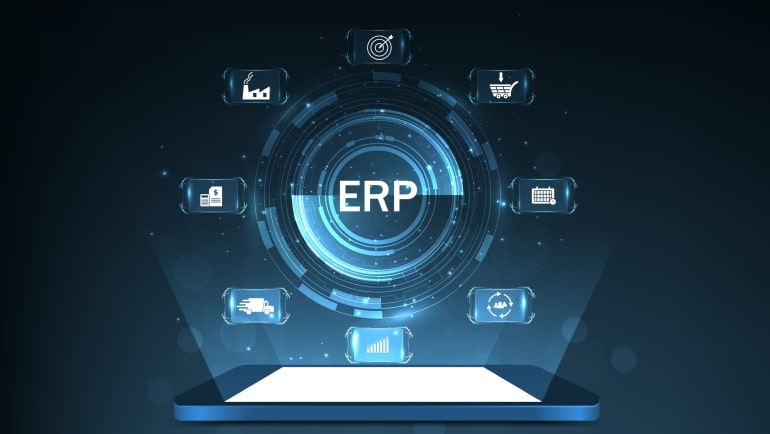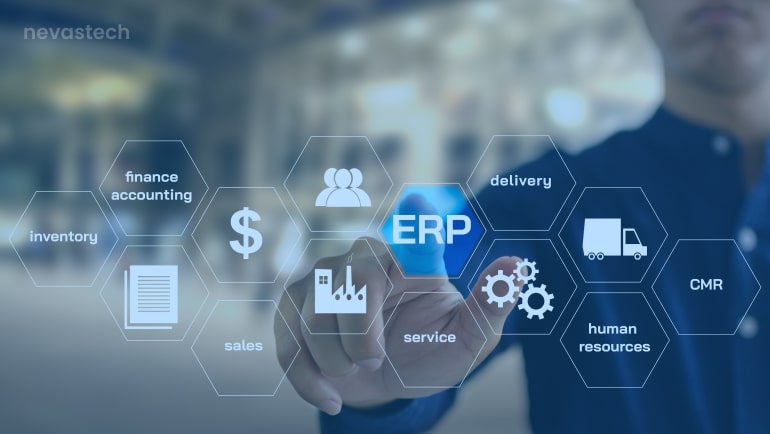5 Steps for a Successful ERP Implementation
When it comes to ERP implementation, following a thorough procedure is just as important as choosing the right ERP solution.
You will have a much better chance of success if you take a systematic and proven strategy to your implementation. We recommend that you follow these 5 ERP implementation steps based on our experience with over 100 plus ERP implementations.
Step 1 – Diagnostic
The first finding. Find out what your fundamental needs are?
Step 2 – Analysis
Determine the exact specifications for the project.
Step 3 – Solution Modeling
Design, configuration, and development are all done in an iterative manner.
User acceptance testing and initial training.
Step 4 – Deployment
Finally, get ready to go live.
Step 5 – Operation
Client ownership transition and ongoing support
This process was based on Microsoft’s Sure Step methodology. Our strategy, like Microsoft’s suggested procedures, has evolved over time. Sure Step had discrete “design” and “development” steps, but we’ve found that integrating them into an iterative “solution modeling” step allows for greater real-time input between the client and the solution partner, less rework, and a better final match with the customer’s needs.
1. Diagnostic
In this step, you’ll meet with your solution partner for early discovery meetings to determine your basic requirements for the new ERP. This step responds to high-level questions such as:
- What are the core requirements for the new solution?
- What inefficient operations (such as manual data entry) will be eliminated by the new ERP?
- What other business applications does the new solution need to integrate with?
Because the diagnostic step is usually completed before a significant letter of engagement is approved, some sources skip over it when describing the implementation process.
It is, nonetheless, necessary for risk mitigation. A thorough diagnostic process can help you prevent unpleasant surprises in the analysis stage.
2. Analysis
You and your partner will go review your specific business processes and requirements in this step. Your solution provider should collaborate with you to ensure that all pertinent business processes are thoroughly documented. You should have a statement of work for the implementation project, as well as your documentation of business needs and the solutions your partner presents, at the end of this step.
This documentation is referred to by a variety of terms such as:
- Documentation of Business Requirements (BRD)
- Document of Functional Requirements (FRD)
- Fit-Gap Analysis
- Solution Design Proposal
3. Solution Modeling
The solution modeling stage is by far the most significant, and it is divided into multiple sub-steps:
- Technical Setup
- Design and Documentation
- Development
- Data Migration Planning
- Training
- Testing
- Technical Setup – For the new ERP, your partner creates appropriate development environments. Much of this takes place behind the scenes, although you may be required to pay for licenses and fill out paperwork.
- Design and Documentation – Further documentation is being prepared now to define how the ERP will be customized or integrated with other systems to fit the business processes and requirements.
- Construction and Configuration – This entails configuring the ERP’s interface and functionality in detail. An ERP like Dynamics 365 Business Central or Dynamics 365 Finance & Operations can be configured in a variety of ways. Most of your needs may usually be met through setup by a qualified implementation partner with sufficient documentation of your business needs.
- Development – Customization and integrations with other business programmes are included. Customization is generally more complex than configuration, and therefore leads to higher maintenance expenses in the long run. However, considerable customization is frequently required to match your company’s specific requirements. Before development begins, all customizations and integrations should be documented and approved by the customer.
- Data Migration Planning – What to migrate, how to format it, and how to clean it are three critical components of data migration planning to consider. Your partner can help you format the data and import it using templates and suggestions.
- Training – In most cases, it’s also a good idea to “train the trainer.” Request that your partner concentrate on thoroughly teaching a smaller group of your team members. Those team members will then train the remaining of your staff throughout the deployment phase. As a result, your company’s understanding of its new ERP will be more thorough and robust. Testing and training may be done as part of the deployment process rather than solution modeling in some projects.
- Testing – User Acceptance Testing (UAT) is an important step in any ERP implementation, but it is sometimes overlooked in the haste to reach the “finish line” of go live. It is critical that your team members perform the testing (who have already been trained).
The specific tests to perform are guided by a script that should be tailored to your business. Read User Acceptance Testing for Microsoft Dynamics 365 Business Central for UAT best practices and an example script for Dynamics 365.
4. Deployment
During the deployment phase, also known as cut-over, you and your partner prepare and then go live with the new ERP.
Several technical steps are involved in this process, including:
- Production Environment Creation
- Load Testing
- Validation and Data Migration
This step also includes training your entire staff. We generally recommend that this be done by members of your own team who have been previously trained by your partner.
Finally, your new ERP goes live. It’s often best to complete this on a Monday morning so your team can come in fresh and begin working in the new system.
5. Operation
The operation step’s goal is to move you from the implementation project to ongoing support after a successful go-live.
You and your partner create final documentation for both the solution and a project review.
You may also have ad hoc questions that require your partner’s input.
The new ERP is handed over to the client at the end of this phase, with ongoing support from your partner.
ERP Implementation Project Governance
Project Management Team : This group is in charge of the project’s day-to-day operations. They must:
- Create a project schedule and keep track of its progress.
- Handle requests for changes
- Identify, manage, and communicate risks, as well as their potential impact on timelines, budgets, and deliverables.
- When necessary, escalate issues to project sponsors in advanced projects.
Your implementation partner should provide project management, and in large implementations, the customer should also have a project manager.
The second level of governance is also required for advanced projects.
Project Sponsor : On both the client and solution partner sides, these are the high-level sponsors. The sponsors’ role is to work together as a steering committee to remove barriers and resolve conflicts that the project management team cannot resolve on their own.
These are the high-level sponsors on both the client and solution partner sides. Together, the sponsors’ role is to:
- Provide high-level guidance for aligning the project with business requirements.
- On the client side, show your support for the project, which will help with overall company buy-in.
- At the same time that all of the above steps in the implementation are taking place, it is critical that you and your partner have adequate project governance for the process.
The sponsors should not be actively involved in the project as managers or subject matter experts. It is critical to maintain some distance between the “in the trenches” focus of implementation and the supervisory guidance that sponsors should provide.
Nevas Technologies, a Dynamics 365 Business Central Partner
At Nevas Technologies we have completed over 100 plus Dynamics ERP and CRM implementations, as well as Power BI and the rest of the Microsoft stack. We offer our clients training and advice, as well as ongoing support. If you are undergoing or planning an ERP implementation project, you may also be interested in learning more about:
- ERP Implementation Risks
- ERP Implementation Success Factors
- Our Services as a Dynamics Implementation Partner
Contact us for specific advice and assistance with your Business Central implementation Partner.
Nevas Technologies, a renowned Microsoft Dynamics 365 Business Central Implementation Partner.




